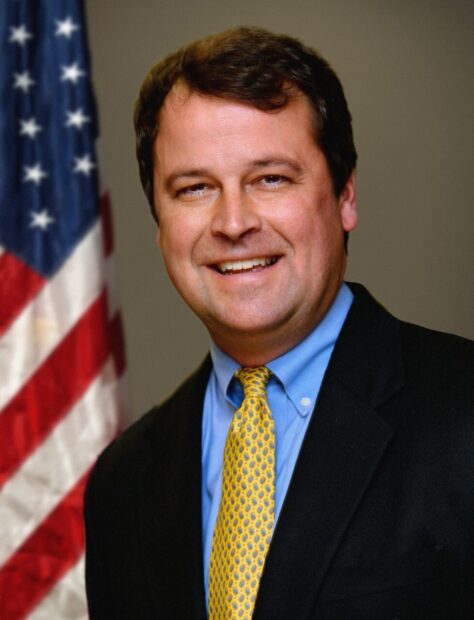Although Gov. Brad Little and the State Board of Education are encouraging schools to safely reopen at the end of the summer, they are also asking schools to prepare to deliver blended or remote learning amid the pandemic.
The State Board of Education on Wednesday approved guidance intended to help local school district officials develop blended education systems as the state continues to grapple with the uncertainty of the coronavirus pandemic.
The move follows on the heels of last week’s State Board approval of nonbinding reopening guidance for school officials developing local back-to-school plans.

Kurt Liebich
“The virus will dictate how we deliver education in the fall,” State Board member Kurt Liebich said. “All of us want kids back in school, but the reality is… you’re probably going to have to have the ability to deliver blended learning in a way that you weren’t prepared to deliver in the spring.”
Blended learning is a mix of the traditional, in-person educational model and remote, online or distance learning. It could come into play if schools are forced to close, operate at reduced capacity or stagger student schedules.
Liebich, who co-chaired the Digital Divide Task Force that helped develop the recommendations, said there are four basic recommendations for blended learning. He likened them to legs of a stool.
- Move the state toward a 1:1 ratio of devices, meaning every student has a device to do schoolwork.
- Make sure students have internet connectivity. That connectivity may or may not be at their house.
- Districts need a learning management system that can deliver online lessons and facilitate communication between schools and families or teachers and students.
- The state and schools need to provide professional development training to help staff members use those learning management systems.
The blended learning plans and reopening plans are closely related, even though they tackle seemingly separate ideas.
Last week’s reopening guidance identified three categories of school operation, based on the local threat of COVID-19. Under category two (mild to moderate community transmission) the recommended guidance suggests schools incorporate a blended learning instructional model. Under category three (substantial transmission) full remote learning and extended school closures are recommended.
Liebich said part of the plan is to avoid the disruptions and surprises from March, when schools across the state basically stopped on a dime and moved to distance learning without full plans in place.
“I don’t think we should have expected (it), but we weren’t prepared,” Liebich said. “Some districts were more prepared than others, but I would not say any district was prepared, nor would I expect them to be.”
Liebich also sounded a note of caution that widespread, sustainable changes could be expensive even with the state using $3.8 million in federal aid funding to help launch a learning management system. He worried districts may struggle to pass supplemental levies during the pandemic and said the State Board may need to work with the Legislature to create an economically sustainable model.
It could cost the state $71 million in incremental investments to provide 180,000 devices and move Idaho to a 1:1 ratio. It could cost another $10-$15 million to provide internet connectivity for an estimated 28,000-45,000 students that don’t have internet connectivity, Liebich estimated.
“There is not enough money here today to solve the problem,” Liebich said. “We’re going to do the best we can. Districts are going to have to prioritize.”
The recommendations from the digital divide committee are available online. (Scroll down to Tab 2, Attachment 1 to see the recommendations.)
State Board backs budget holdbacks
In other action, the State Board of Education approved a letter of support for the state’s 5 percent budget holdbacks, Wednesday.
The holdback isn’t new, but the state is gearing up for action because the new budget year began July 1.
Back on May 8, Gov. Brad Little issued a memo to school officials notifying them of his intent to holdback 5 percent of general funds for the 2020-21 budget year.
For public schools, that’s about a $98.7 million hit.

Linda Clark
In order to achieve the holdbacks, Little proposed several reductions, including freezing educators in place on the career ladder salary allocation system, suspending raises for classified staff and administrators, suspending leadership premiums, reducing professional development training, reducing funding for IT staffing, classroom technology and more.
“It should be noted publicly this was done with an eye to minimizing the impact on student learning, choosing sections of the general fund budget that have the least bearing on direct student learning,” State Board member Linda Clark said.
Greg Wilson, Little’s education adviser, said Little requested a letter of support from the State Board and schools chief Sherri Ybarra as part of the effort to implement the holdbacks.
Coming Thursday
For more information about the role public health officials will play in advising local schools about their local category of risk, check in with Idaho Education News on Thursday evening for a new story.
Further reading:
Click here to read the state’s reopening guidance, the Idaho Back-To-School 2020 Framework.
